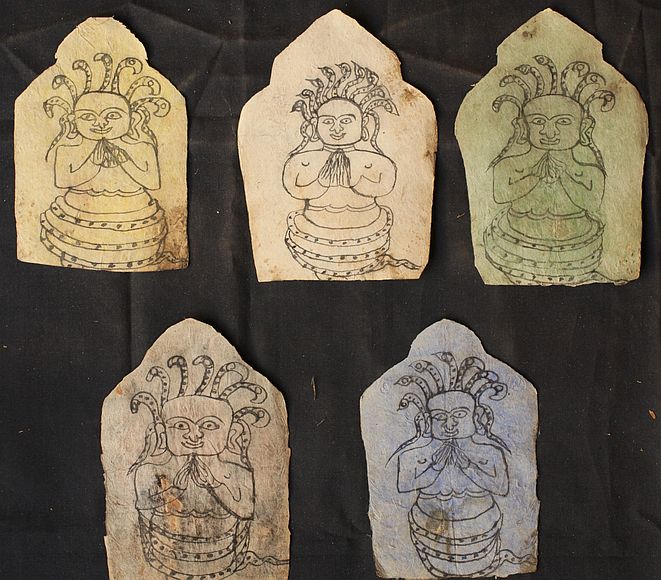
| PL |
Format and layout
There is a wide variety of formats for the Tibetan book or document on paper. These include the scroll, concertina, codex, and the most familiar form of Tibetan book, the dpe cha, which consists of rectangular unbound leaves. Sometimes it is referred to as the pothi format, named after the Indian term for the model on which it was based. The Indian prototype is made out of palm leaves, and it is this form that the Tibetan longbook reproduces in paper. From its proliferation from the fifteenth century onward, wood-block printing or xylography cemented the dpe cha as the predominant format for the Tibetan book. The dpe cha certainly became the dominant book format in Tibetan culture and it is also the main format we found in the Drangsong collection; together with ritual items written on single sheets of paper or bound books of deb thar format.




HOME | INTRODUCTION | BACKGROUND | PROVENANCE STUDY | PEOPLE | NEWS | CONTACT